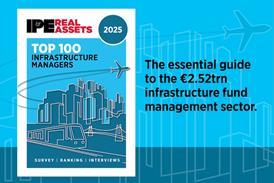Austrian, British, Dutch and German investors in particular are becoming increasingly international in their acquisitions, accounting for a large proportion of activity in Central and Eastern Europe, according to the latest EMEA report from real estate consultant Colliers.
Austrian, British, Dutch and German investors in particular are becoming increasingly international in their acquisitions, accounting for a large proportion of activity in Central and Eastern Europe, according to the latest EMEA report from real estate consultant Colliers.
'Investors from the US, Canada, and Asia Pacific are expected to re-enter the market in the next year. Additionally, with new regulations allowing Chinese companies to invest directly in commercial real estate, we anticipate increasing interest from this part of the world, specifically in trophy assets,' notes Jos Schüssel, CEO of Colliers Netherlands and co-head of Colliers EMEA's Investment Business Team.
Colliers expects investment activity across the EMEA region to pick up in the second half of 2009 after volumes hit a two-year low in the first half, representing a 60% decline on H1 2008. Two-thirds of the countries surveyed expect to see higher investment volumes in the second half of 2009, the consultant found.
Yields appear to have stabilised, with fewer than one-in-three EMEA countries anticipating further softening over the next six months, says Colliers. In Western Europe, prime office yields have settled between 5% and 6.5% for the time being. In the Baltic States, however, prime yields remain at 10% or higher.
The limited availability of loans, together with the strict requirements of those banks that are lending, continues to impact on the speed of recovery, Colliers observes. 'Figures from across the EMEA region show that loan-to-value ratios are below 60% on average, compared to a high of 80% or more in 2007', notes Kate Lawler, Colliers EMEA Regional Research Coordinator.
Private investors are the most visible players throughout the region, while institutional investors are picking their targets with considerable care. Another notable trend is that domestic investors account for the majority of activity in many countries, says Colliers.










